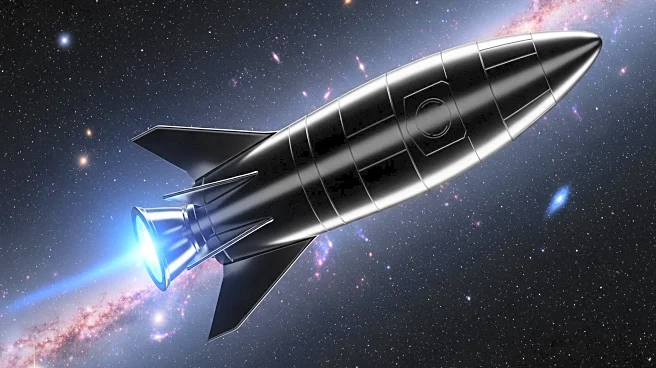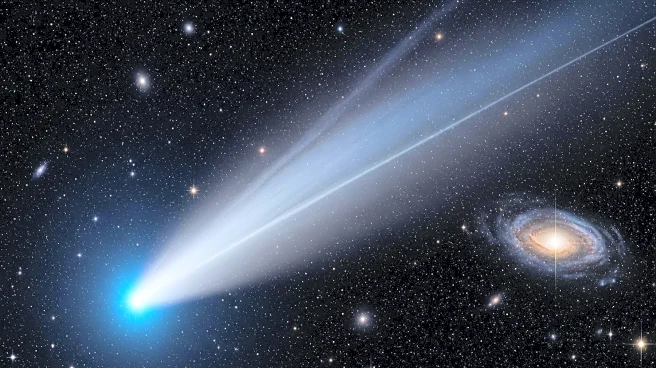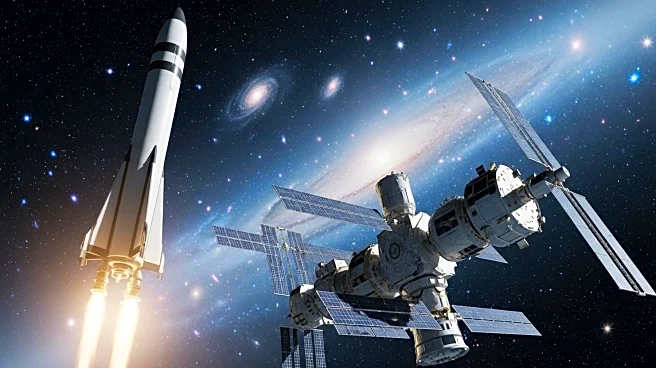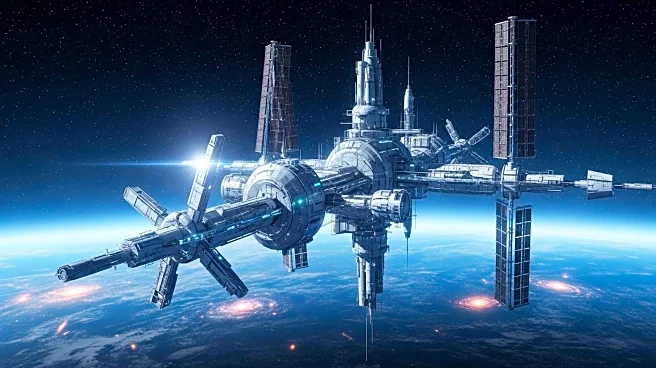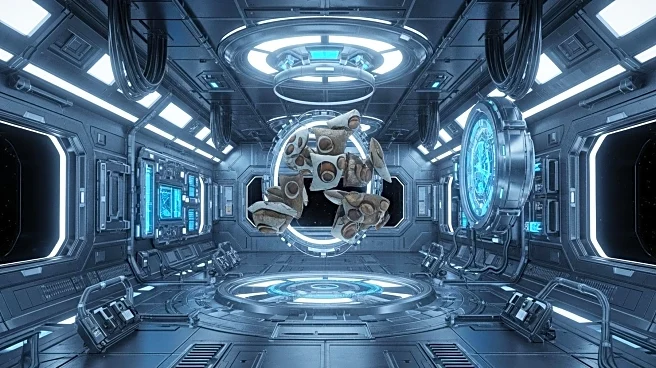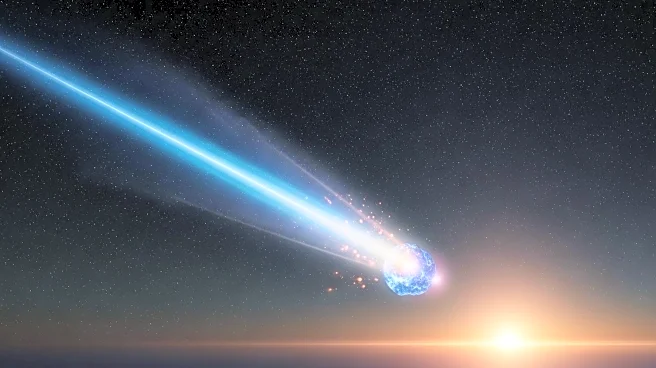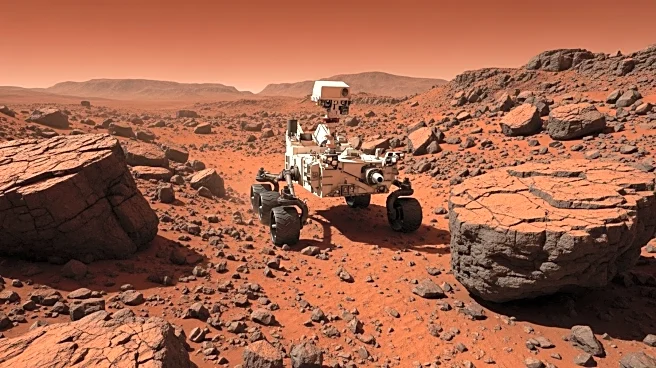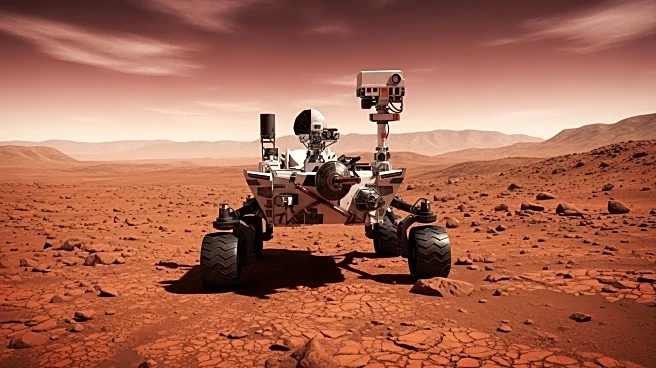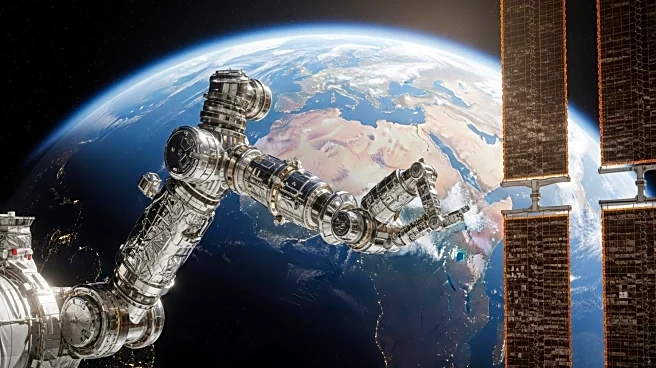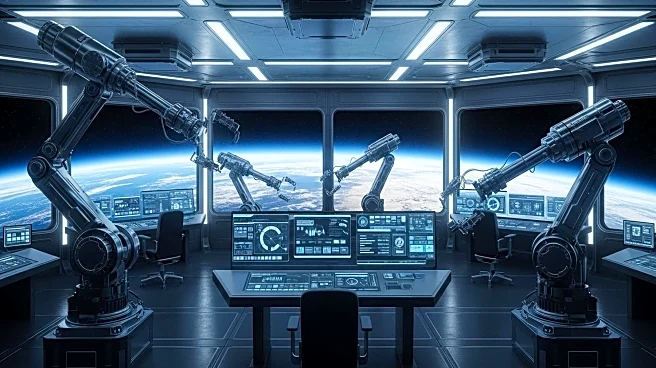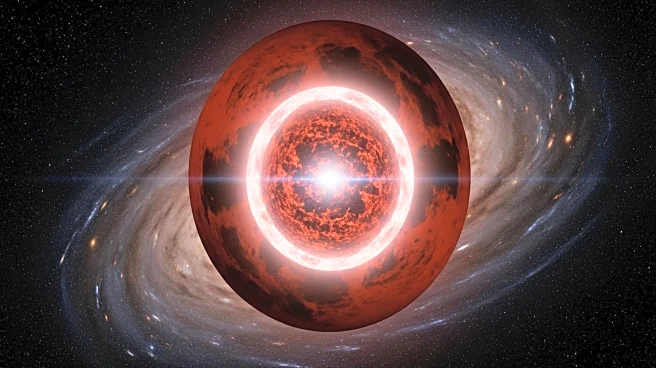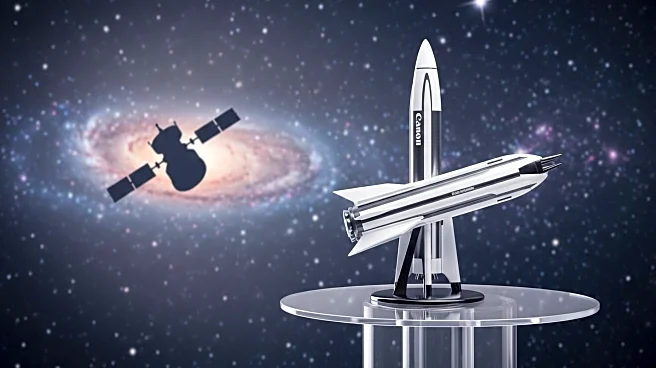What is the story about?
What's Happening?
Researchers at the University of Albany have developed a new boron-based rocket fuel compound that offers 150% more energy than traditional aluminum-based fuels. This breakthrough could significantly enhance payload capacity for space missions, optimizing fuel storage and enabling more ambitious exploration endeavors. The compound, manganese diboride (MnB2), exhibits a unique spring-like structure that accumulates energy, releasing it during combustion. Synthesized using an arc melter, MnB2 remains safe, igniting only with an agent like kerosene. This innovation could transform space travel by allowing spacecraft to carry heavier payloads or travel greater distances.
Why It's Important?
The development of MnB2 as a high-energy rocket fuel represents a significant advancement in propulsion technology, potentially transforming the landscape of space exploration. By reducing the space required for fuel storage, missions could allocate more room for essential equipment and scientific instruments. This could enhance existing missions and open possibilities for more ambitious endeavors, such as Mars exploration or establishing lunar bases. The compound's properties also suggest potential applications beyond space travel, including automotive catalytic converters and plastic decomposition catalysts, highlighting its versatile nature and potential impact across industries.
What's Next?
The introduction of MnB2 could lead to more efficient propulsion systems, enabling spacecraft to carry heavier payloads or travel greater distances. As space agencies and private companies push the boundaries of exploration, innovations like this could redefine the future of interstellar travel. Researchers will likely continue to explore the compound's potential applications, both in space and other industries, to fully realize its benefits. The successful implementation of MnB2 in space missions could pave the way for further advancements in propulsion technology, driving the next generation of space exploration.
AI Generated Content
Do you find this article useful?
